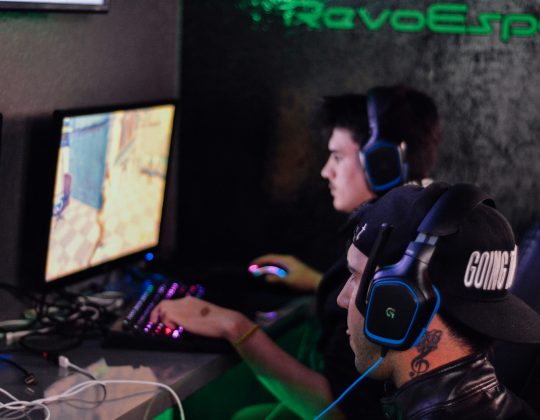In recent years, users have become increasingly interested in touchless interaction with digital environments. One of the pioneering devices to enable such interaction was the Microsoft Kinect, originally developed for the Xbox gaming system. The Kinect’s ability to track a user’s body movements and convert them into digital input quickly caught the attention of developers beyond the gaming world. One such innovative offshoot was Kinemote—an application that brought gesture-based control to media centers, offering users an entirely new way to manage their home entertainment systems.
Kinemote combines the interactive potential of the Kinect with intuitive gesture-based controls to make operating media center applications seamless and futuristic. By using Kinect’s depth-sensing camera and motion tracking capabilities, Kinemote interprets the position of the user’s body and hands to issue commands such as playing a video, adjusting the volume, or navigating menus, all without touching a single remote or controller.

How Kinemote Works
At its core, Kinemote uses the skeletal tracking feature of the Microsoft Kinect. As the Kinect scans the user’s body, it maps major joints and body parts in 3D space. Kinemote processes this skeletal data to detect pre-defined gesture patterns and translates them into commands for the media center.
For example, a right hand swipe to the left can move to the next item in a playlist, while pushing a hand forward might act as a selection or “click” gesture. The system is based on recognizing both static positions and dynamic movements.
The software can interface with popular media center applications such as:
- Windows Media Center
- XBMC / Kodi
- Boxee
- MediaPortal
In practice, Kinemote becomes an invisible remote control, empowering users to control their media with simple body movements from across the room.
Features of Kinemote
Kinemote comes packed with features that enhance the gesture-based experience of managing a media center:
- Out-of-the-box Support: Kinemote offers plug-and-play functionality for many popular media centers. It auto-detects compatible installations and configures itself quickly.
- Customizable Gestures: Users can assign different gestures to different commands, offering a personalized experience.
- Multiple User Detection: The software distinguishes between multiple users in the room and responds only to commands from the active user.
- Low-Latency Response: Even modest computers can run Kinemote smoothly, thanks to its low hardware requirements and quick interpretation engine.

Use Cases and Benefits
Kinemote provides an elegant solution to a variety of scenarios where traditional control methods fall short. For example:
- Hands-free operation during meals: Users watching content during dinner can pause or adjust volume without touching a remote.
- Hygienic control in public installations: Interactive kiosks in museums or hospitals can benefit from gesture control, reducing the need for physical touch.
- Accessibility enhancement: For users with limited mobility, touchless controls can provide easier access to entertainment systems.
These examples highlight how Kinemote is not just a novelty but a practical solution with real-world applications.
Challenges and Limitations
Although Kinemote opened new doors for human-computer interaction, it also faced some challenges that are typical of gesture-based systems. Notably:
- Lighting Conditions: Kinect sensors can struggle in dimly lit rooms, especially when trying to differentiate depth and motion.
- Gesture Recognition Accuracy: While most gestures are highly reliable, false positives can occur if movements are ambiguous or too fast.
- Fatigue Factor: Extended use may result in “gorilla arm” syndrome — fatigue caused by holding arms out for long periods.
Despite these drawbacks, developers have worked continually on refining gesture accuracy and processing speed to create a smoother user experience.
Community and Open-Source Contributions
One of the strengths of Kinemote was its open-source approach. Developers around the world contributed to the project, refining its gesture detection, adding new integrations, and expanding its documentation. This open ethos allowed for rapid iteration and improvement, driven by a passionate community of technologists and media enthusiasts.
Additionally, tutorials, guides, and user-generated gesture libraries have been shared freely, enabling even novice users to get started with minimal effort and frustration.
The Future of Gesture-Based Media Interaction
Although Kinect hardware has been discontinued officially by Microsoft, its legacy lives on in tools like Kinemote. As developers turn to newer depth-sensing cameras and motion detection technologies such as Intel RealSense or Leap Motion, the principles behind Kinemote are evolving into new forms of interface interaction.
Future media centers could use a combination of voice recognition, gesture tracking, and AI-powered user context detection to offer users a blend of touchless convenience and smart interactivity.

Conclusion
Kinemote represents a key milestone in the evolution of user interfaces. By enabling gesture-based control over traditional media center software, it linked revolutionary Kinect technology to everyday usability. The concept of controlling media through the wave of a hand passes beyond science fiction into practical, touchless interaction at home.
Its combination of open-source collaboration, real-time responsiveness, and customizable gestures made it a favorite among experimental users and developers alike. Even though mainstream consumer markets may have moved on, the innovation that Kinemote sparked continues to influence modern human-computer interaction today.
Frequently Asked Questions (FAQ)
- Q: What devices are compatible with Kinemote?
- A: Kinemote was primarily designed for the original Microsoft Kinect sensor (for Xbox 360 and PC). It runs on Windows PCs with support for Kinect SDK.
- Q: Can I use Kinemote on a Smart TV?
- A: No, Kinemote is not directly compatible with Smart TVs. It runs on a PC connected to your media center and requires a Kinect sensor.
- Q: Is Kinemote still being updated?
- A: Development has slowed since the discontinuation of Kinect, but the open-source community continues to maintain forks and alternatives.
- Q: Do I need programming knowledge to use Kinemote?
- A: Not at all. Most users can install and configure Kinemote without needing to write code. However, developers may benefit from modifying gesture profiles.
- Q: Are there alternatives to Kinemote?
- A: Yes, tools like FAAST, KinEmote alternatives using Leap Motion, and modern gesture SDKs provide similar functionality with newer hardware.







